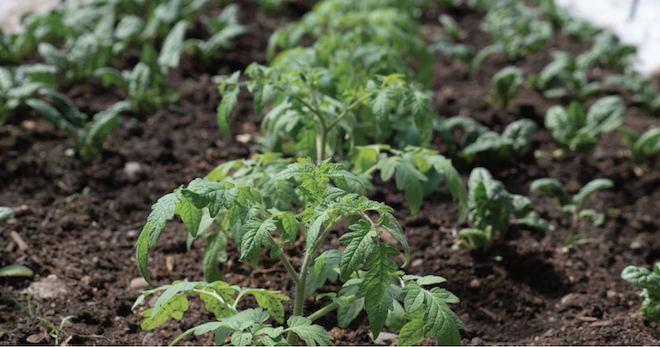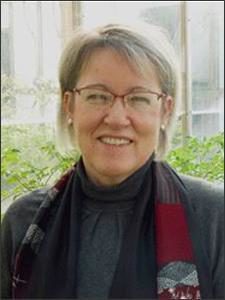

Mar 17, 2020Anaerobic soil disinfestation curbs high tunnel pathogens
Continuous production of high value crops in high tunnels – with few rotation options – can lead to a build-up of soilborne diseases.
“If you grow tomatoes after tomatoes, year after year, that will lead to a buildup of pathogens,” said Sally Miller, professor in vegetable pathology at Ohio State University (OSU) and a speaker at the recent Great Lakes Fruit, Vegetable and Farm Market EXPO in Grand Rapids, Michigan.
The build-up of soilborne diseases is especially troublesome with pathogens that have many hosts and if production is year-round with continuous warm temperatures.
The list of problemsoilborne pathogens that can plague high tunnels is long.
Verticillium and fusarium wilts are both issues with verticillium wilt especially concerning because it has a wide range of hosts.


Fungal root rot complexes – black dot root rot and corky root rot – can also build up in high tunnels and can occur separately or together. Black dot appears in 90% of Ohio’s high tunnels and corky root rot in about half of them.
White mold, rhizoctonia root and crown rot, and pythium root rot are other troublesome soilborne diseases. All of them are long-lived in the soil and have a broad host range.
Root knot nematode has also become a problem in high tunnels and can increase the severity of fungal root rots.
However, new research at OSU shows incorporating a carbon source into the soil of a high tunnel under anaerobic conditions causes a shift in soil microbial communities, increased acidity and production of volatile organic acids that suppress these soil-borne pathogens. The process is called anaerobic soil disinfestation (ASD).
“It utilizes your natural biological population in the soil,” Miller said. “When you use ASD, you shift the microbial population toward those populations that produce acids and can survive acidic and anaerobic environments.”
The process is being widely studied and is being used on a big scale in California and Florida because of the loss of methyl bromide.
ASD involves three steps. Growers incorporate the organic material into the soil, irrigate the soil to saturation to create the anaerobic environment and cover the soil with plastic to keep it anaerobic. Acetic acid and butyric acid are the main acids produced by the process.
In OSU’s study, ASD reduced the amount of root rot pathogens, increased weed seed mortality and greatly reduced the root knot nematode population.
The treatment also achieved good control of white mold. “The acids chew up the outside melanized layer of the sclerotia,” Miller said.
The source of the soil amendment in ASD is crucial. “When you pick your carbon source, find something you can easily get and isn’t too expensive,” Miller said.
The OSU study tested wheat bran and molasses. The best results came from a combination of nine tons of wheat bran and 4.5 tons of molasses per acre.
“First, you spread the wheat bran and incorporate it with a rototiller or by hand,” Miller said. The incorporation depth is six to eight inches. “Molasses is a liquid and may percolate into the soil better than wheat bran,” Miller said. You have to dilute the molasses because it’s so thick.
The next step is to water the treated area to saturation and put the plastic down carefully. “The plastic edge needs to be tucked under and covered with soil so there’s a good seal to keep gases in,” Miller said.
A heavier grade of plastic should be used and the soil covered for three to five weeks. The soil can be covered before irrigation if a drip tape is placed under plastic and used for watering.
ASD is more effective with warmer soil temperatures and longer covering periods. Three weeks should be long enough to control most pathogens if the soil temperatures are consistently more than 85° F.
After irrigation on a coarse-textured soil, you may have to add more water after you put down the plastic to keep the soil saturated.
Check the soil fertility after ASD treatment. “You’re adding a lot of carbon and the microbes may be binding up your nitrogen,” Miller said.
Delay planting five to seven days after removing the plastic to allow time for the soil to dry and aerate.
ASD has some issues. “ASD reduces the population of some beneficials, but the data shows they tend to come back pretty quickly,” Miller said. There’s also the issue of butyric acid’s strong smell so you don’t want to work in the greenhouse until it’s aired out.
Most importantly, ASD must be combined with other management practices. “This is not a silver bullet,” Miller said.
Sanitation after harvest is one practice that must be combined with ASD. Leaving plants in the soil after harvest leaves hosts for pathogens.
Weed control is vital. “They harbor diseases and insect pests,” Miller said. “Weeds also make the environment more humid which is a big factor for diseases.”
“We want to prevent the existing pathogen population from increasing. We want to reduce the existing pathogen population and we want to reduce the seed bank,” Miller said. “That’s hard to do but ASD is an option.”
— Dean Peterson, VGN correspondent














